|
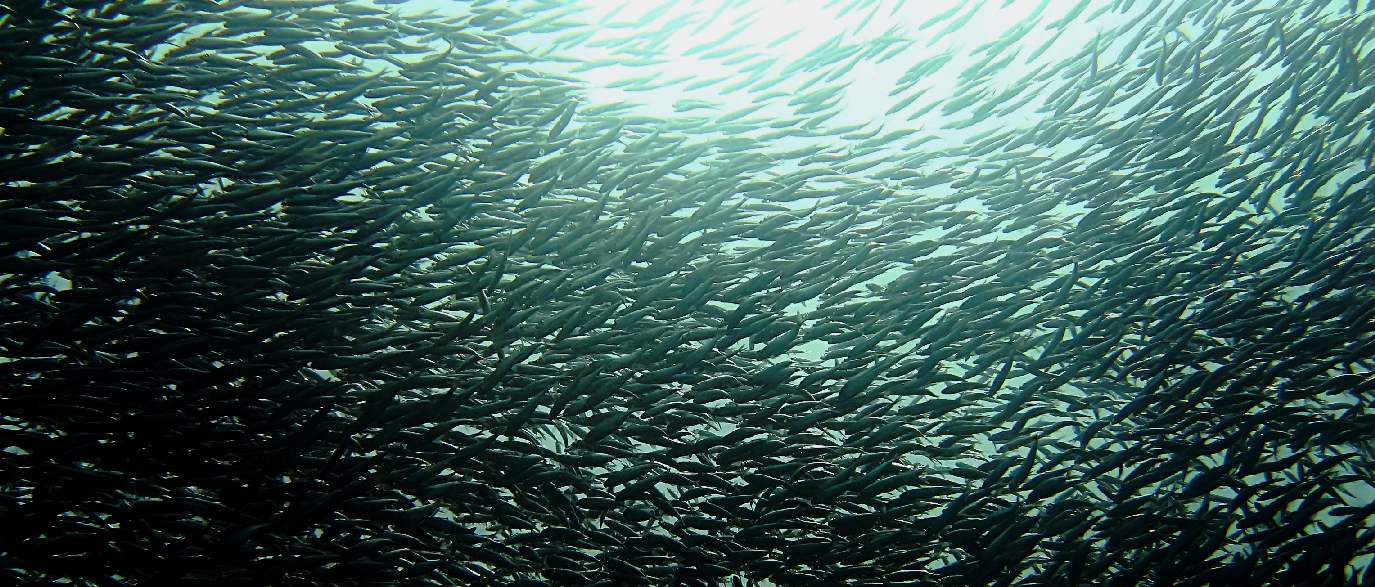
WHAT
FUTURE OUR OCEANS? - The versatility of SeaVax™ is enhanced using a
modular approach that helps us to develop these ocean going machines into an economic tool for the long-term prosperity
of all fishing nations in the drive for a truly
sustainable, circular economy.
BLUE
GREEN GROWTH
The
SeaVax concept provides us with an ocean going platform that operates on solar and
wind
power, hence
it is
a green or zero carbon boat that may be adapted to find and harvest wild
fish in strictly controlled fashion to enhance blue
growth objectives. The most likely uses for such a
fishing boat could be, but are not limited to:-
1.
Fishing for krill
2.
Fishing for mackerel and herring (sardines, pilchards)
3.
Fishing
for jellyfish
Each
of these uses would require suitable modifications to the workings of a
SeaVax, but could conceivably be made to function as an autonomous fishing
vessel (AFV).
One possible limitation
is that a catch should be landed
relatively quickly or the boats batteries
might not cope with refrigeration for long periods. There are though ways
to cope with that and such a vessel is especially suited to beach launched
fishing fleets such as those operated on the south coast of England,
Gambia, New Zealand, Poland, Portugal, Thailand and Vietnam - to name but a
few.
According to the
United Nations
Food and Agriculture Organization (FAO), at the end of 2004, the world fishing fleet consisted of about 4 million vessels, of which 2.7 million
(67.5%) were undecked (open) boats. While nearly all decked vessels are motorized, only one-third of the undecked fishing boats were powered, usually with outboard engines. The remaining 1.8 million
(45%) boats were traditional craft of various types, operated by sails and
oars. Of the decked vessels, 86 percent are found in Asia, 7.8 percent in Europe, 3.8 percent in North and Central America, 1.3 percent in Africa, 0.6 percent in South America and 0.4 percent in
Oceania:
|
FISHING
BOAT TYPE @ 2004 |
PERCENTAGE
% |
QUANTITY |
. |
|
. |
. |
. |
. |
|
Decked
fishing boats, motorized |
32.5 |
1,300,000 |
. |
|
Undecked
motorized |
22.5 |
900,000 |
. |
|
Undecked
sails/oars (traditional) |
45 |
1,800,000 |
. |
Most commercial fishing boats are small, usually less than 30 metres (98 ft) but up to 100 metres (330 ft) for a large purse seiner or factory ship.
As
a fishing boat, SeaVax would slot into this category and be more suited to catch smaller fish and
krill for human consumption and as feed; as a starting point.
One
of the most important features of such a vessel would be the ability to
differentiate between fish types, and to tune the filtration system so as
to catch the target species of a legal size, so reducing the (wastage)
quantity of dead fish that are thrown back into the sea as being illegal
to land.
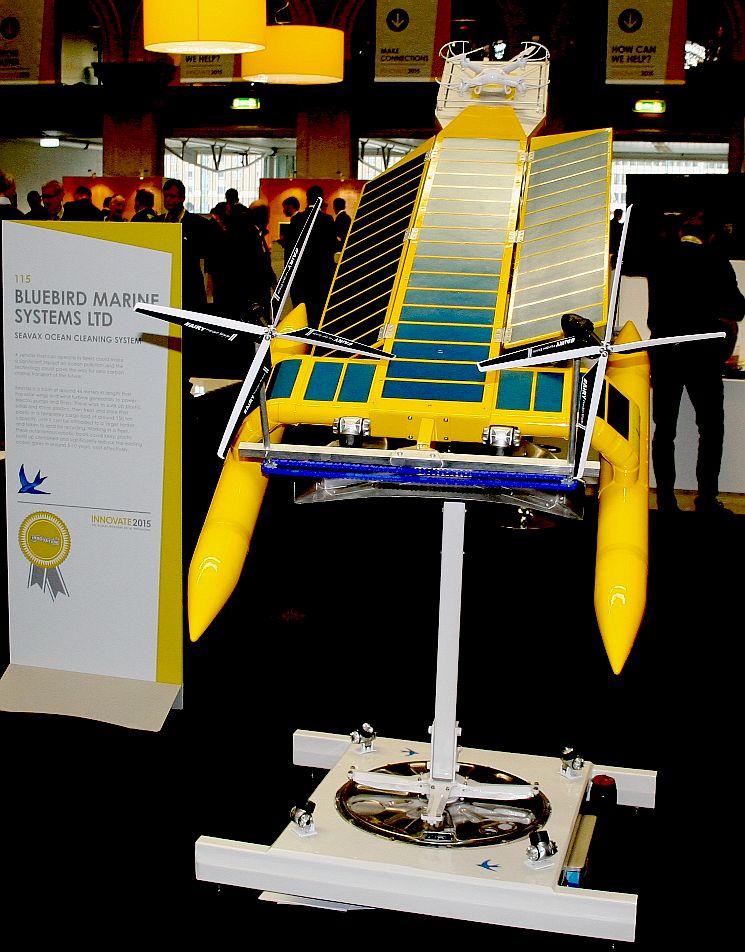
SEAVOLUTION
- This amazing autonomous boat was on display at the Old
Billingsgate exhibition centre in London on the 9-10th of
November 2015. The stand was especially made for this show. A
wild fish harvesting version of this ocean plastic fishing
boat could herald the future of sustainable fishing for
generations to come. This proof of concept model is
only 2.2 metres long. The full size vessel is 44 metres long
with a suction head some 13.5 metres wide (44 feet).
As
a fishing vessel, SeaVax could take advantage of satellite based fish
finding, providing data to oceanographic institutions of fish populations
and geographical information (GIS) for improved ocean modeling and pattern
prediction.
Another
major 'green' advantage is that the 55% of motorized fishing vessels in
the world that consume fossil fuels (according the the UN),
totaling some 2.2 million craft, could be replaced by solar powered boats
sustainable blue growth in a circular economy that is not reliant on
fossil fuels that are changing our climate
and polluting planet
earth.
By
the same token, we should encourage the use of traditional sail
and oar powered craft, that in more developed countries are very rare
indeed. The focus could be on sailing boats, where sail power multiplies
the efforts of the crew, but oar power is directly limited to the number
crew who are able bodied, as in the Egyptian and Roman galleons typically
rowed by slaves and the Viking long boats.
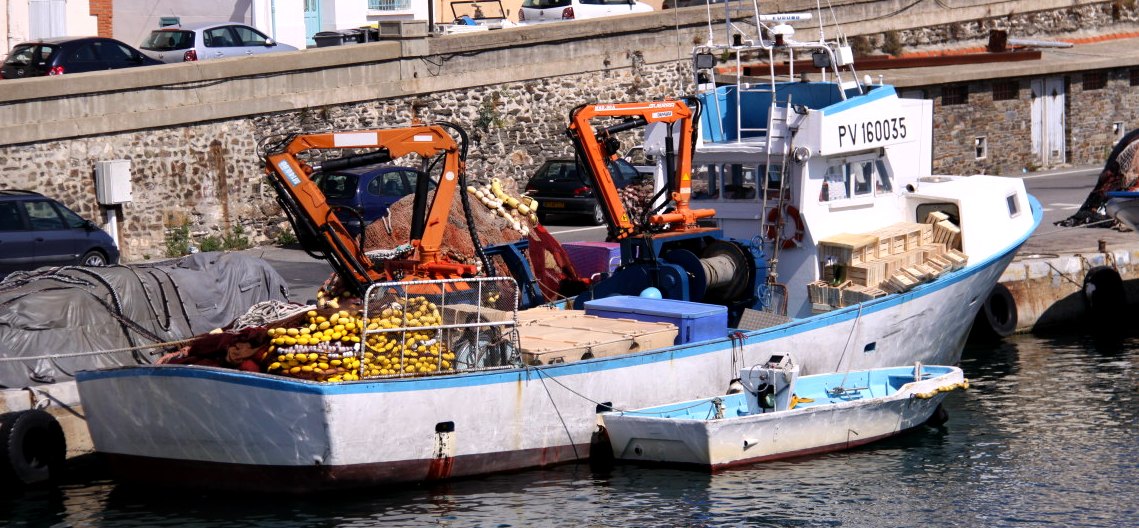
NETS -
A traditional sardine fishing boat tied up in harbour in France - a sardine seiner.
AMPHIMAX
BEACH LAUNCHER
The
SeaVax concept goes hand in hand with the AmphiMax, amphibious
launch and recovery vehicle to provide a comprehensive fishing system that
builds on the successes of other beach launched fleets around the world
such as those at Hasting
in England
and Ngawi
in New
Zealand.
These
beach launched fishing fleets use bulldozers to launch and recover their
boats, or in the case of Hastings, use winches to haul their boats out of
the sea and back up onto the beach.
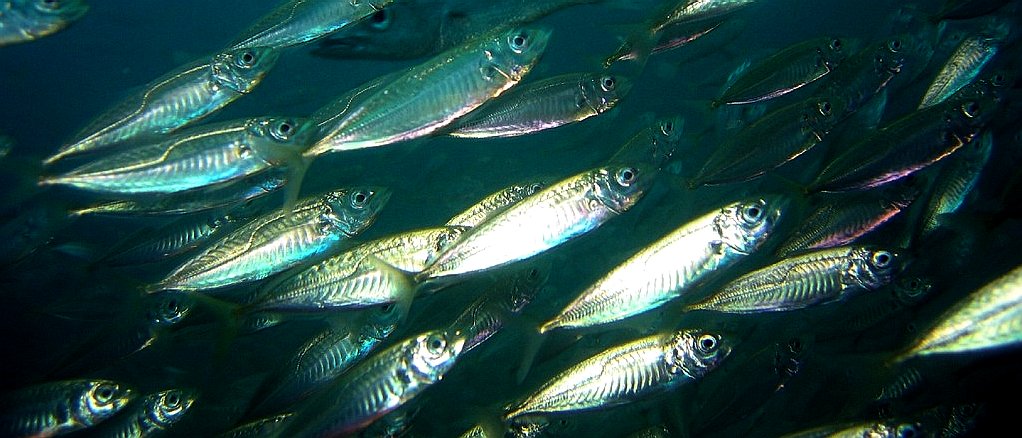
FORMATION
SWIMMING - The stripes on mackerel are one of natures miracles for
formation swimming. The stripes on neighbouring fish provide "schooling marks" which signal changes in relative position. Fish have an optokinetic reflex in their visual systems which can be sensitive to moving stripes. In order for fish to school efficiently, they need feedback mechanisms that help them align themselves with adjacent fish, and match their speed.
DESIGN -
The objective of the SeaVax design was primarily to deal with ocean plastics, but by adopting a modular approach,
we are building in sufficient adaptability to further developed the concept to
harvest biological organisms. Given that the priority task was to avoid
fish, the vessel may be used to hunt for specific marine species.
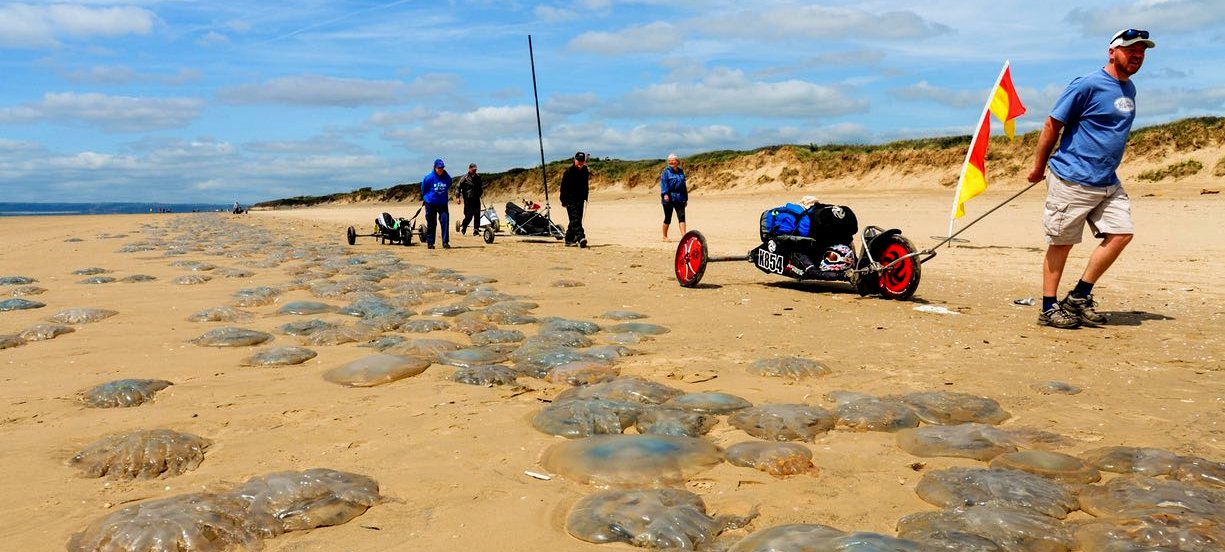
SWARMING -
Thousands of jellyfish are washed-up on Pembrey Sands near Llanelli,
Carmarthenshire, Wales in June of 2015.
SARDINES
- "Sardine" and "pilchard" are common names used to refer to various small, oily fish within the herring family of Clupeidae. The term sardine was first used in English during the early 15th century and may come from the Mediterranean island of Sardinia, around which sardines were once abundant.
The terms "sardine" and "pilchard" are not precise, and what is meant depends on the region. The United Kingdom's Sea Fish Industry Authority, for example, classifies sardines as young pilchards. One criterion suggests fish shorter in length than 15 cm (6 in) are sardines, and larger fish are pilchards. The FAO/WHO Codex standard for canned sardines cites 21 species that may be classed as sardines; FishBase, a comprehensive database of information about fish, calls at least six species "pilchard", over a dozen just "sardine", and many more with the two basic names qualified by various adjectives.
Typically, sardines are caught with encircling nets, particularly purse seines. Many modifications of encircling nets are used, including traps or weirs. The latter are stationary enclosures composed of stakes into which schools of sardines are diverted as they swim along the coast. The fish are caught mainly at night, when they approach the surface to feed on plankton. After harvesting, the
fish are submerged in brine while they are transported to shore.
Sardines are commercially fished for a variety of uses: for bait; for immediate consumption; for drying, salting, or smoking; and for reduction into fish meal or oil. The chief use of sardines is for human consumption, but fish meal is used as animal feed, while sardine oil has many uses, including the manufacture of paint, varnish and linoleum.
Pilchard fishing and processing became a thriving industry in Cornwall (UK) from around 1750 to around 1880, after which it went into decline. Catches varied from year to year and, in 1871 the catch was 47,000 hogsheads while in 1877 only 9,477 hogsheads. A hogshead contained 2,300 to 4,000 pilchards and, when filled with pressed pilchards, weighed 476 lbs. The pilchards were mostly exported to Roman Catholic countries such as Italy and Spain where they are known as ″fermades″. The chief market for the oil was Bristol where it is used on machinery. As of 2007, however, stocks are improving. Since 1997, sardines from
Cornwall have been sold as "Cornish sardines", and since March 2010, under EU law, Cornish sardines have Protected Geographical Status. The industry has featured in numerous works of art, particularly by Stanhope Forbes and other Newlyn School artists.
In the United States, the sardine canning industry peaked in the 1950s. Since then, the industry has been on the decline. The canneries in Monterey Bay, in what was known as Cannery Row, failed in the mid-1950s. The last large sardine cannery in the
United
States, the Stinson Seafood plant in Prospect Harbor, Maine, closed its doors on 15 April 2010 after 135 years in operation.
Sardines are rich in vitamins and minerals. A small serving of sardines once a day can provide 13 percent of vitamin B2; roughly one-quarter of niacin; and about 150 percent of the recommended daily value of vitamin B12. All B vitamins help to support proper nervous system function and are used for energy metabolism, or converting food into energy. Also, sardines are high in the major minerals such as phosphorus, calcium, potassium, and some trace minerals including iron and selenium. Sardines are also a natural source of marine omega-3 fatty acids, which may reduce the occurrence of cardiovascular disease. Recent studies suggest that regular consumption of omega-3 fatty acids reduces the likelihood of developing Alzheimer's disease. These fatty acids can also lower blood sugar levels. They are also a good source of vitamin D, calcium, vitamin B12, and protein.
Because they are low in the food chain, sardines are very low in contaminants such as mercury, relative to other fish commonly eaten by
humans.

MACKEREL
- Mackerel is a common name applied to a number of different species of pelagic fish, mostly, but not exclusively, from the family Scombridae. They are found in both temperate and tropical seas, mostly living along the coast or offshore in the oceanic environment.
Mackerel typically have vertical stripes on their backs and deeply forked tails. Many species are restricted in their distribution ranges, and live in separate populations or fish stocks based on geography. Some stocks migrate in large schools along the coast to suitable spawning grounds, where they spawn in fairly shallow waters. After spawning they return the way they came, in smaller schools, to suitable feeding grounds often near an area of upwelling. From there they may move offshore into deeper waters and spend the winter in relative inactivity. Other stocks migrate across oceans.
Smaller mackerel are forage fish for larger predators, including larger mackerel and Atlantic cod. Flocks of seabirds, as well as whales, dolphins, sharks and schools of larger fish such as tuna and marlin follow mackerel schools and attack them in sophisticated and cooperative ways. Mackerel is high in omega-3 oils and is intensively harvested by humans. In 2009, over five million tons were landed by commercial fishermen. Sport fishermen value the fighting abilities of the king mackerel.
Mackerel
scales (if present at all) are extremely small. Like tuna and bonito, mackerel are voracious feeders, and are swift and manoeuvrable swimmers, able to streamline themselves by retracting their fins into grooves on their body.
The prominent stripes on the back of mackerels are not to provide camouflage against broken backgrounds. Mackerel live in midwater pelagic environments which have no background.
The stripes on neighbouring fish provide "schooling marks" which signal changes in relative position. Fish have an optokinetic reflex in their visual systems which can be sensitive to moving stripes. In order for fish to school efficiently, they need feedback mechanisms that help them align themselves with adjacent fish, and match their speed.
Mackerel are prolific broadcast spawners and must breed near the surface of the water due to the eggs of the females floating. Individual females lay between 300,000 and 1,500,000 eggs. Their eggs and larvae are pelagic, that is, they float free in the open sea. The larvae and juvenile mackerel feed on zooplankton. As adults they have sharp teeth, and hunt small crustaceans such as copepods, as well as forage fish, shrimp and squid. In turn they are hunted by larger pelagic animals such as
tuna, billfish, sea lions,
sharks and pelicans.
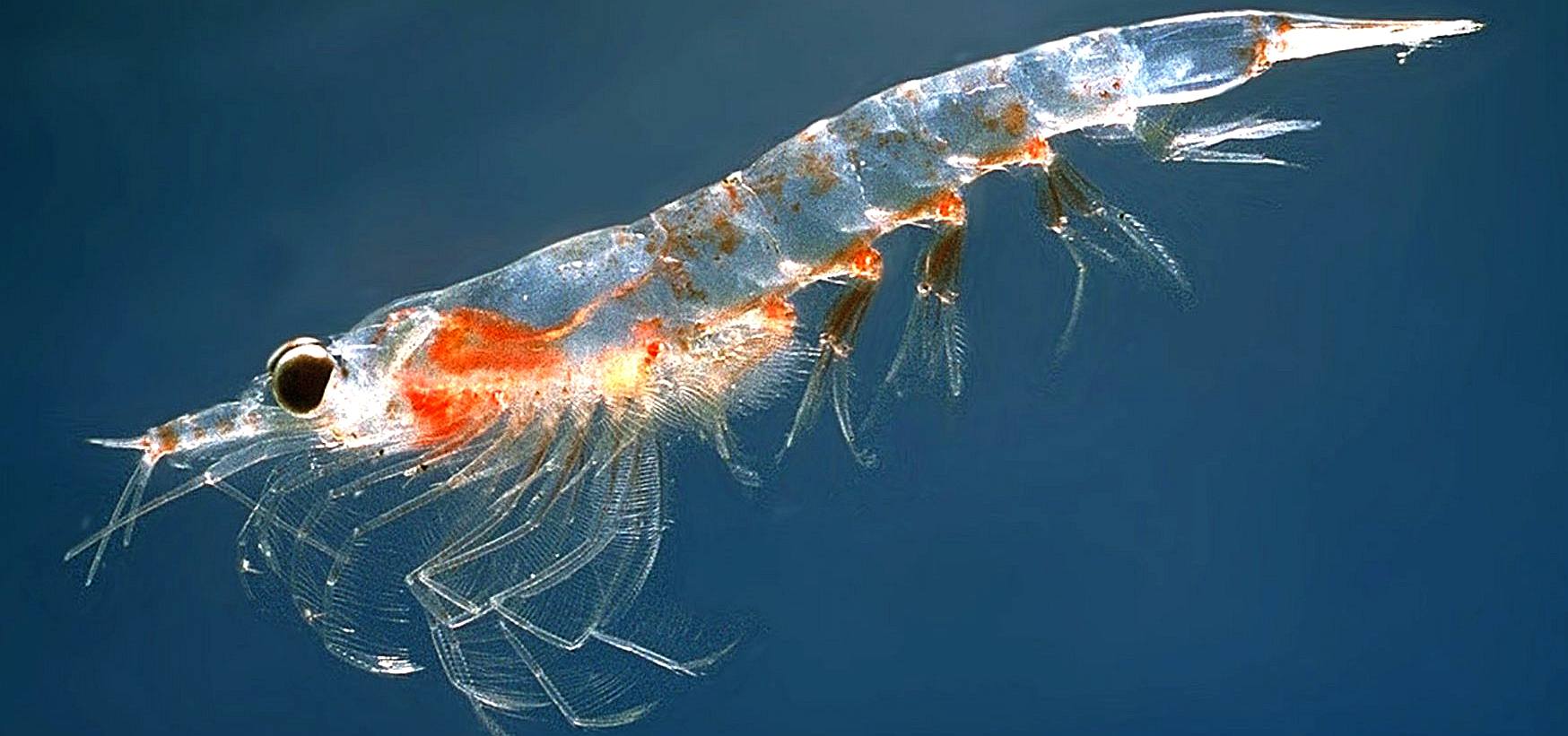
KRILL -
Krill can make a nutritious meal for hungry humans or reasonably priced
fish food for fish
farming operations.
KRILL
- Krill are small crustaceans of the order Euphausiacea, and are found in all the world's oceans. The name krill comes from the Norwegian word krill, meaning "small fry of fish", which is also often attributed to species of fish.
Krill are considered an important trophic level connection – near the bottom of the food chain – because they feed on phytoplankton and (to a lesser extent) zooplankton, converting these into a form suitable for many larger animals for whom krill makes up the largest part of their diet. In the Southern Ocean, one species, the Antarctic krill, Euphausia superba, makes up an estimated biomass of around 379,000,000 tonnes, making it among the species with the largest total biomass. Of this, over half is eaten by
whales,
seals, penguins, squid and fish each year, and is replaced by growth and reproduction. Most krill species display large daily vertical migrations, thus providing food for predators near the surface at night and in deeper waters during the day.
Krill are fished commercially in the Southern Ocean and in the waters around Japan. The total global harvest amounts to 150,000–200,000 tonnes annually, most of this from the Scotia Sea. Most of the krill catch is used for aquaculture and aquarium feeds, as bait in sport fishing, or in the pharmaceutical industry. In Japan, Philippines and Russia, krill are also used for human consumption and are known as okiami (オキアミ?) in
Japan. They are eaten as "camarones" in Spain. In the Philippines, it is known as "alamang" and it is used to make a salty paste called bagoong.
Krill occur worldwide in all oceans, although many individual species have endemic or neritic (i.e., coastal) distributions. Bentheuphausia amblyops, a bathypelagic species, has a cosmopolitan distribution within its deep-sea habitat.
Species of the genus Thysanoessa occur in both Atlantic and Pacific oceans. The
Pacific is home to Euphausia pacifica. Northern krill occur across the Atlantic from the Mediterranean Sea northward.
Species with neritic distributions include the four species of the genus Nyctiphanes. They are highly abundant along the upwelling regions of the
California, Humboldt, Benguela, and Canarias current systems. Another species having only neritic distribution is E. crystallorophias, which is endemic to the Antarctic coastline.
Species with endemic distributions include Nyctiphanes capensis, which occurs only in the Benguela current, E. mucronata in the Humboldt current, and the six Euphausia species native to the Southern Ocean.
Most krill are about 1–2 centimetres (0.4–0.8 in) long as adults; a few species grow to sizes on the order of 6–15 centimetres (2.4–5.9 in). The largest krill species is the bathypelagic Thysanopoda spinicauda. Krill can be easily distinguished from other crustaceans such as true shrimp by their externally visible gills.
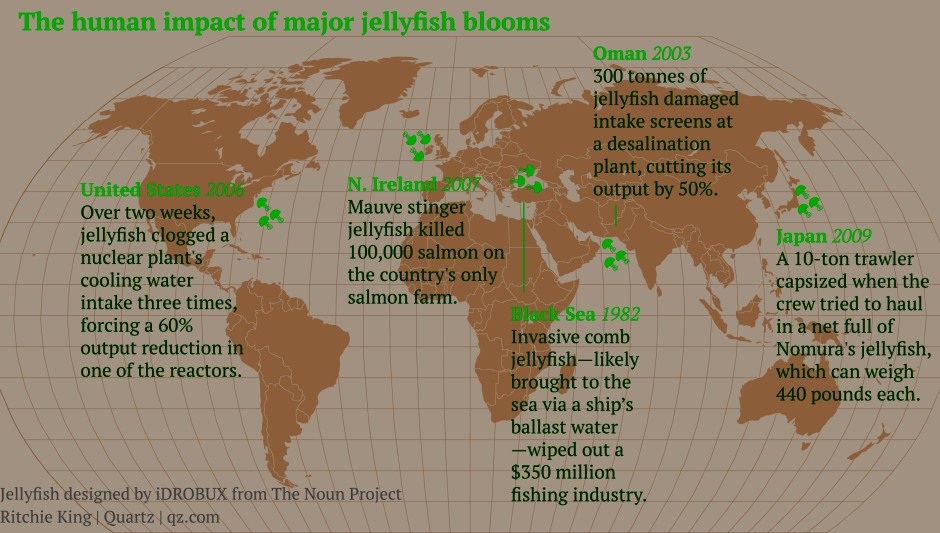
THE
CLEANING OCEANS - The world is constantly changing and we must evolve
to meet the challenges that threaten sustainable management of our natural
resources. We take it for granted that we can enjoy a walk along the
seafront, and food on our plates. Mother earth has been acting like a
sponge to our throw away society, but for how much longer can that
continue, before the consequences take hold.
JELLYFISH THE GUARDIAN AUGUST 2015 - Another British summer, another set of fear-mongering headlines about swarms of “deadly” jellyfish set to ruin your holiday. But news that jellyfish numbers may be rising carries implications far beyond the interrupted pastimes of the sunburnt masses.
Like a karmic device come to punish our planetary transgressions, jellyfish thrive on the chaos humans create. Overfishing wipes out their competitors and predators; warmer water from climate change encourages the spread of some jellies; pollution from fertilisers causes the ocean to lose its oxygen, a deprivation to which jellyfish are uniquely tolerant; coastal developments provide convenient, safe habitat for their polyps to hide. In addition, the great mixing of species transported across the world in the ballasts of ships opens up new, vulnerable ecosystems to these super-adaptors.
“They’ve got this unique life cycle where they can tolerate harsh conditions and then rapidly thrive when conditions are favourable. So when a stressor like climate change or overfishing opens up a niche for them they can really take advantage of that and rapidly proliferate,” said Lucas Brotz, a researcher at the University of British Columbia. Not all species of jelly benefit, rather there tends to be a reduction in the diversity of species and vast, homogenous masses emerge.
“They can make millions and millions of copies of themselves and clone asexually. That’s when you get these massive blooms. I think that’s the secret to the success of jellyfish, the reason they’ve been around for hundreds of millions of years.”
The latest flurry of “jellyfish invasion” stories was spawned by an announcement by the UK’s Marine Conservation Society (MCS) that their annual survey of UK waters for 2015 was looking like being a ‘record-breaker’.
The problem is there aren’t many records to break. The MCS survey has only run for 12 years, not enough to identify a strong trend. Further confusing the issue, the MCS study relies on members of the public for its data. Citizen science is a wonderful tool but adds extra uncertainty – the society admits it cannot be sure how much of the growth is due to more jellyfish and how much is people becoming aware of their survey and reporting to it.
Even so, the charity’s jellyfish expert Dr Peter Richardson said climate change and overfishing were fundamentally changing the ocean.
“At the same time we seem to be witnessing increases in jellyfish around the UK. Is this an anomaly, a coincidence, or are the jellyfish telling us something?” he asked.
Are these British blooms harbingers of the age of the jelly? Globally, jellyfish are little surveyed and their numbers vary wildly from year to year for reasons not entirely understood. Because of the paucity of historical records, jellyfish experts are hesitant about whether a global trend exists.
But Priscilla Licandro, a researcher at the Sir Alister Hardy Foundation for Ocean Science, said in the few places where decent data exist, populations of jellyfish tend to be rising.
“There is not very much reliable information, but from what we’ve got, at least at a regional level, there is an increase in the persistence and the occurrence,” she said. In the Mediterranean Sea, where records date back some 200 years, natural cycles of boom and bust have been replaced by a constant, large presence.
“[In the Mediterranean] there have been changes in the last 15 to 20 years that haven’t been seen for two centuries,” she said. Similar increases in the northeastern Atlantic seem to support the MCS’s more anecdotal findings.
The links between human activity and local jellyfish blooms are strong. In the Black Sea, invasive comb jellies dumped from the ballast of tankers have spawned deliriously and destroyed the region’s fishing industry. In the Sea of Japan, fertiliser run-off has left an oxygen-depleted sea where little other than jellies can thrive.
But aside from these regional observations, Mark Gibbons, a zoologist at the University of the Western Cape, said the evidence to support a global trend was still patchy.
“Whether there is strong evidence of a global increase in jellyfish populations [now] is difficult to answer. Certainly in some coastal systems there have been increases but in others there have not – or at least the background data with which to measure change are absent or scant, so it is hard to say,” he said.
Other researchers, including Steven Haddock from the Monterey Bay Aquarium Research Institute, believe the current observed rise may represent a natural cycle.
“I have a collection of headlines dating back as far as 1906, and all through the decades, the numbers that people see are ‘unprecedented’,” he said. “In my opinion... there is very little evidence for a global trend that indicates we are due for a future ocean dominated by jellies. They have been in the seas for millions of years, blooming and busting.”
But scientists agree that the continued abuse of our oceans is leading us down a road where fish and other marine animals fail and jellies win.
“In all likelihood, owing to the factors that you have listed, we are going to see more jellyfish,” said Gibbons.
However, said Brotz, “we don’t want to be too quick to say that jellyfish are this evil plague, or the cockroaches of the sea or anything like that. Jellyfish are these beautiful, amazing creatures that play a very important role in the ecosystem.”
To vilify them would be to miss the ultimate lesson: that a future of oceans filled with swarms of gelatinous beasts will not be a jellyfish apocalypse, but a human one.
By Karl
Mathiesen @ Twitter
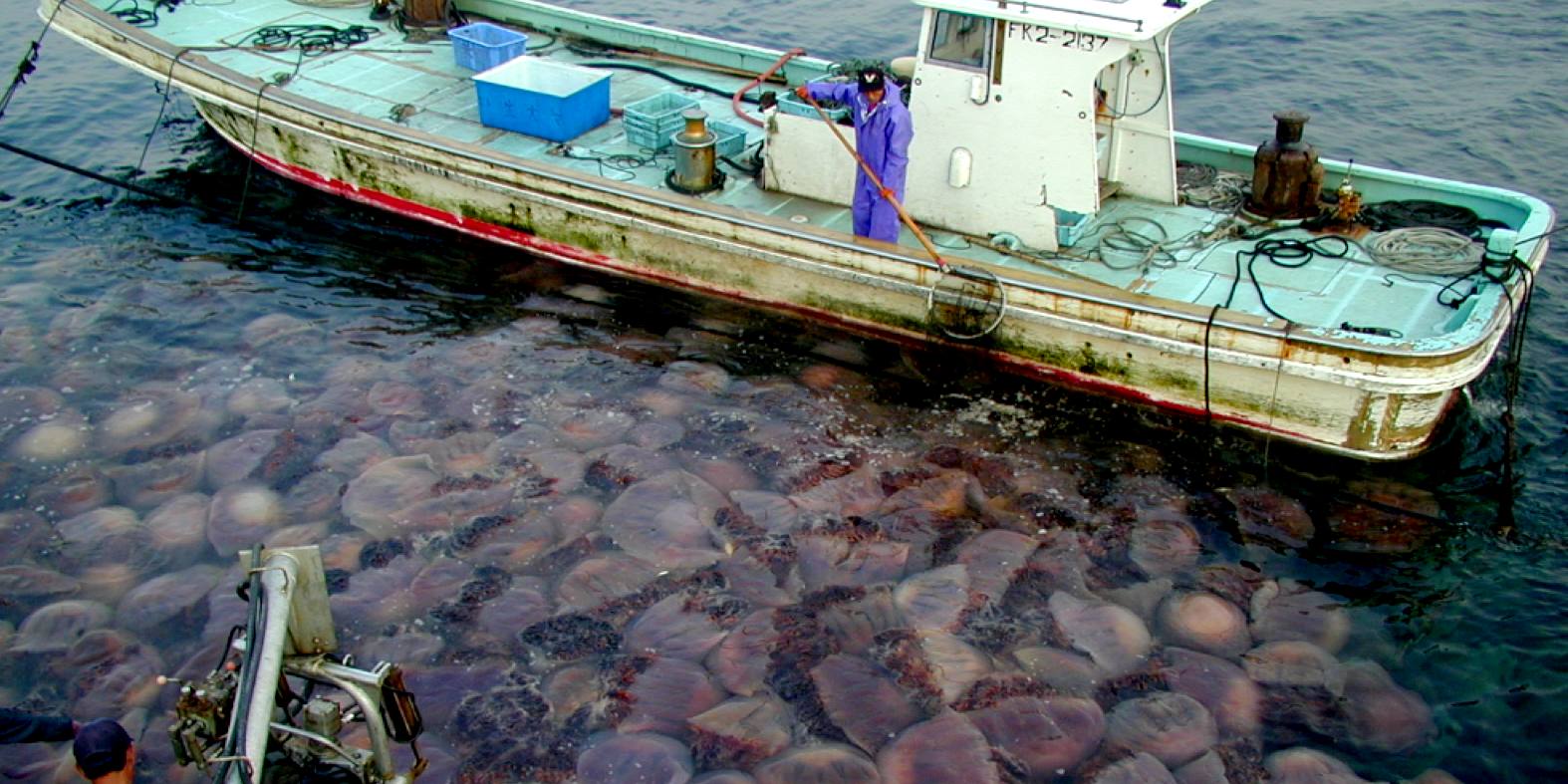
GIANT
JELLYFISH - Giant Jellyfish (Nemopilema nomurai) clog fishing nets in Japan.
Once a month, on the darkest nights near the new moon, otherworldly beings emerge from Pacific Ocean depths and drift onto the beaches of Hawaii.
Hundreds, sometimes thousands, of these quivering masses of jelly float in with the night tide.
Near shore, time grows short to complete their mission: to reproduce, leaving behind miniature versions of themselves fastened with a glue-like substance to reefs and rocks in the shallows.
Box jellyfish, the invaders are called. Over the past few decades, more and more box jellies are in the waters around Hawaii. The question, scientists say, is where are the jellies coming from?
In the marine science world, it's been dogma that jellyfish are increasing in seas and oceans.
Off the coast of France, for example, aggregations of jellyfish have sunk 500-pound fishing nets. And in Japan, jellies have clogged the water intakes of nuclear power plants.
Humans' expanding influence on the oceans has begun to cause changes. "Blooms" of jellyfish are occurring in response to these effects. Or are they?
Their real beauty, though, is their crucial contribution to the functioning of marine ecosystems.
Researchers such as Condon are finding that jellyfish may help us see the complex relationships among species in the oceanic food web.
Jellyfish can live almost anywhere there's water: under the ice in arctic and antarctic seas, and even in North American freshwater lakes and streams, where one tiny species is found.
Most jellyfish are propelled by the rhythmic contraction and expansion of an umbrella-shaped saucer, or bell, as well as by winds, currents and tides. Nearly all are part of a drifting community of organisms called plankton, a term derived from the Greek word for wanderer.
Scientists refer to animal drifters with gelatin-like tissues as gelatinous zooplankton. This group encompasses the familiar bell-shaped jellyfish, related walnut-shaped comb jellies, and similar creatures like siphonophores—chains or colonies of jelly animals.
Many jellyfish live for just one summer. Before they die in September, females release hundreds of eggs into the water, then males release sperm. The resulting larvae swim to the bottom and attach themselves to hard surfaces. In spring they bud into tiny jellyfish, and the cycle begins anew.

LINKS
& REFERENCE
Wikipedia
Krill Wikipedia
Mackerel Wikipedia
Sardines Independent
UK news
when-is-a-pilchard-not-a-pilchard-when-its-a-sardine-sales-of-the-once-neglected-fish-are-booming https://www.theguardian.com/world/2013/oct/01/jellyfish-clog-swedish-nuclear-reactor-shutdown QZ
jellyfish-are-taking-over-the-seas-and-it-might-be-too-late-to-stop-them Royal
society publishing 2010/04/01 rsbl The
Guardian 2015-set-to-be-bumper-year-for-jellyfish-in-uk-waters Daily
Mail UK news
Deadly-jellyfish-tentacles-length-FIVE-London-buses-spotted-English-coast-experts-warn-invasion The
Guardian environment 2015 are-jellyfish-going-to-take-over-oceans Physics
news 2013 jellyfish-blooms-wax-wane-natural https://phys.org/news/2013-01-jellyfish-blooms-wax-wane-natural.html https://en.wikipedia.org/wiki/Krill https://en.wikipedia.org/wiki/Mackerel https://en.wikipedia.org/wiki/Sardine http://www.independent.co.uk/life-style/food-and-drink/news/when-is-a-pilchard-not-a-pilchard-when-its-a-sardine-sales-of-the-once-neglected-fish-are-booming-9833601.html https://www.theguardian.com/world/2013/oct/01/jellyfish-clog-swedish-nuclear-reactor-shutdown https://qz.com/133251/jellyfish-are-taking-over-the-seas-and-it-might-be-too-late-to-stop-them/ http://rsbl.royalsocietypublishing.org/content/early/2010/04/01/rsbl.2010.0150 https://www.theguardian.com/world/2015/aug/20/2015-set-to-be-bumper-year-for-jellyfish-in-uk-waters http://www.dailymail.co.uk/travel/travel_news/article-3203167/Deadly-jellyfish-tentacles-length-FIVE-London-buses-spotted-English-coast-experts-warn-invasion.html https://www.theguardian.com/environment/2015/aug/21/are-jellyfish-going-to-take-over-oceans
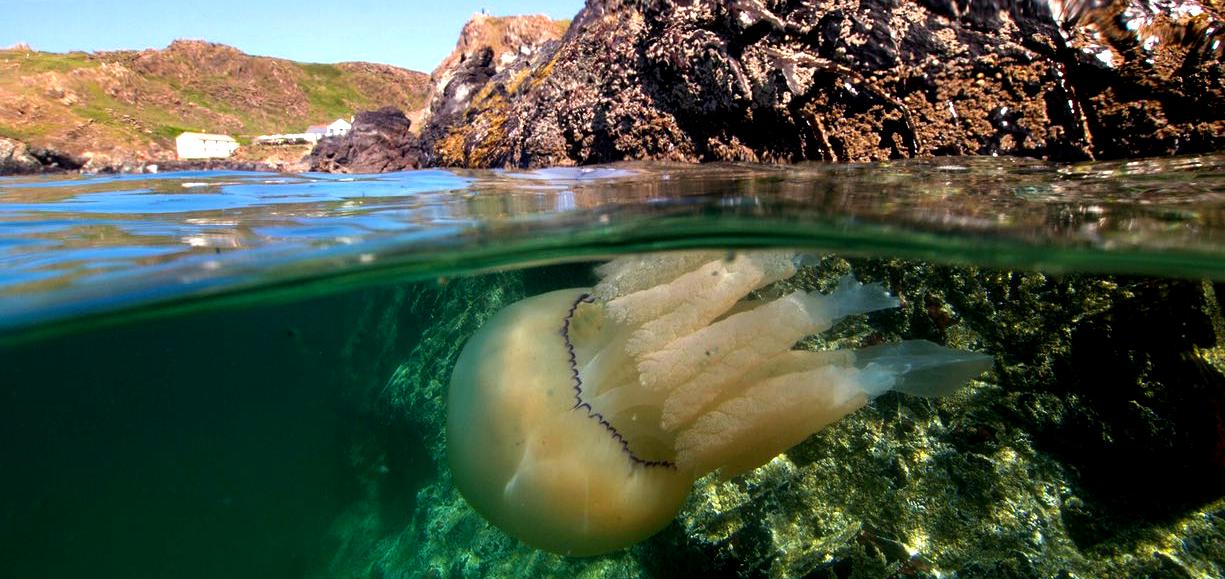
|









